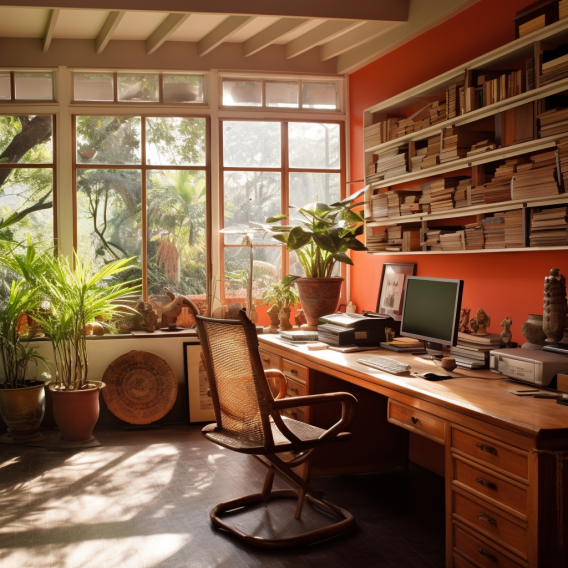Feng Shui, the ancient Chinese practice of harmonizing the energy in your environment, can be a valuable tool when designing your home office. Creating a harmonious and balanced workspace can enhance your productivity, focus, and overall well-being. In this article, we’ll explore how to apply Feng Shui principles to your home office design.
1. Position Your Desk Correctly:
In Feng Shui, the placement of your desk is crucial. Ideally, your desk should be positioned so that you have a clear view of the room’s entrance. This is known as the “command position,” which symbolizes control and security. Avoid having your back to the door, as it can create a sense of vulnerability.
2. Use the Bagua Map:
The Bagua Map is a tool used in Feng Shui to map out the energy centers of a space. Apply the Bagua Map to your home office by aligning the bottom edge of the map with the wall that contains the entrance. This will help you identify the specific areas of your office that correspond to different aspects of your life, such as career, wealth, and health. Enhance these areas with appropriate decor and colors.
3. Declutter and Organize:
Clutter disrupts the flow of energy and can create stress and distraction. Keep your home office tidy by decluttering regularly. Use storage solutions to keep items organized and out of sight. A clutter-free workspace allows for the free flow of energy.
4. Balance the Five Elements:
Feng Shui incorporates the five elements—wood, fire, earth, metal, and water. Incorporate these elements into your home office decor to create balance. For example, you can use wooden furniture, add a metal desk lamp, incorporate earthy colors, include a water feature, and use candles for fire energy.
5. Choose Calming Colors:
Colors have a significant impact on the energy of a space. In your home office, opt for calming and soothing colors. Soft blues, greens, and neutrals can create a peaceful atmosphere, while warm tones like orange and red can promote creativity and passion. Use the Bagua Map to determine which colors are most suitable for different areas of your office.
6. Incorporate Natural Light:
Natural light is essential in Feng Shui. Position your desk near a window to allow natural light to flow into your workspace. If that’s not possible, use full-spectrum lighting to mimic natural light.
7. Add Plants:
Plants are excellent for improving the flow of energy and purifying the air in your home office. Choose plants with rounded leaves or those that are associated with wealth and prosperity, such as the money plant (Pachira aquatica) or the jade plant (Crassula ovata).
8. Use Meaningful Artwork:
Select artwork and decor that resonates with your goals and aspirations. Images that inspire and motivate you can help create a positive and focused energy in your workspace.
9. Personalize Your Space:
Make your home office uniquely yours by incorporating personal items and decor that have special meaning to you. This can include family photos, artwork you’ve created, or items that bring you joy.
10. Maintain Balance:
Feng Shui is all about balance and harmony. Regularly assess the energy in your home office and make adjustments as needed. Trust your intuition and the feelings you have in the space.
By incorporating these Feng Shui principles into your home office design, you can create a workspace that not only promotes productivity but also enhances your overall sense of well-being. The result is a harmonious and balanced environment where you can thrive both personally and professionally.



